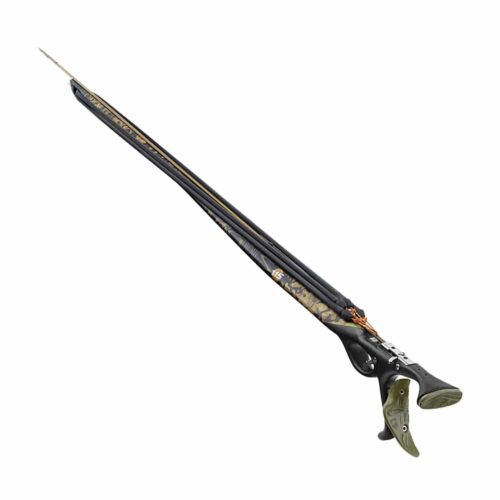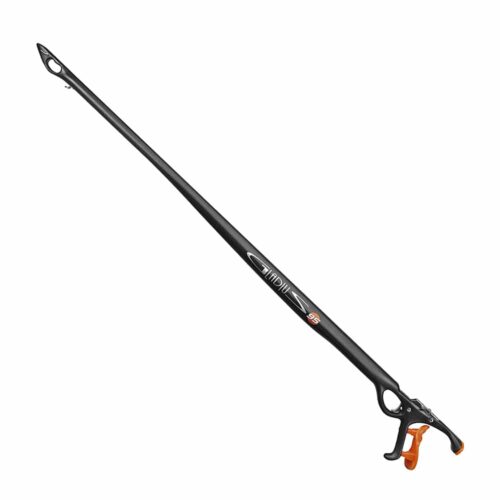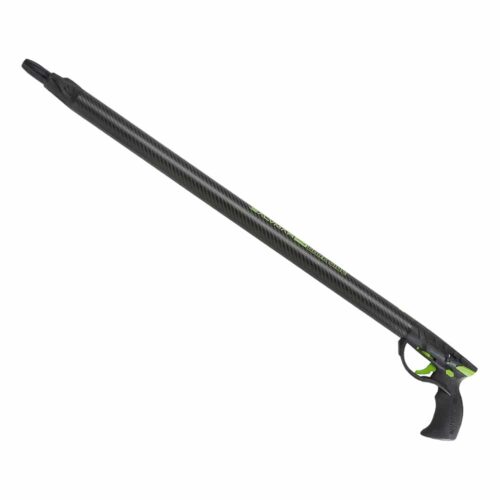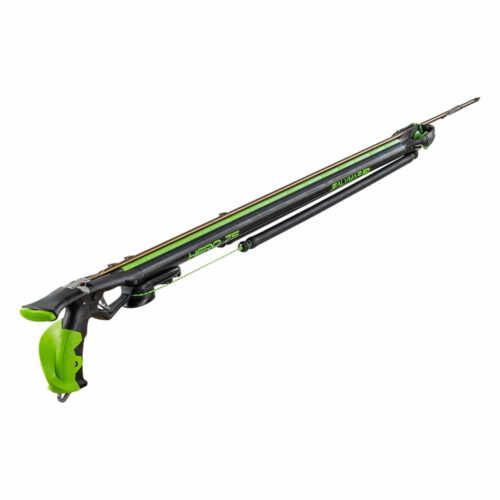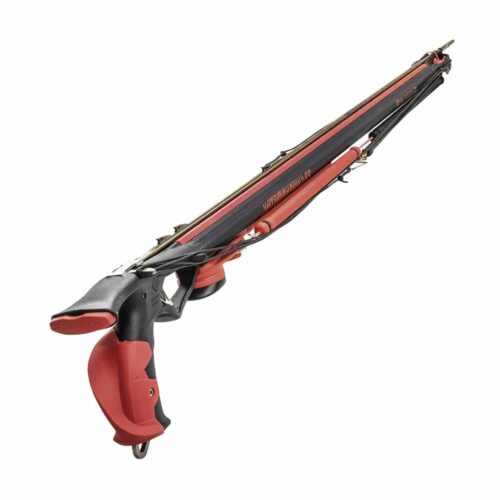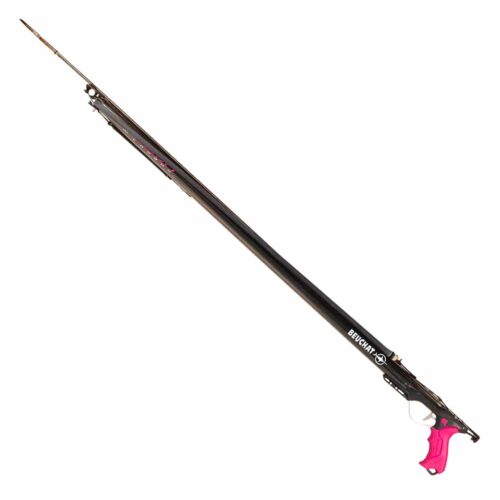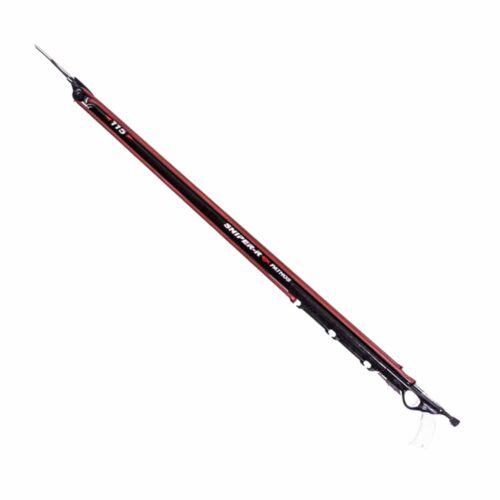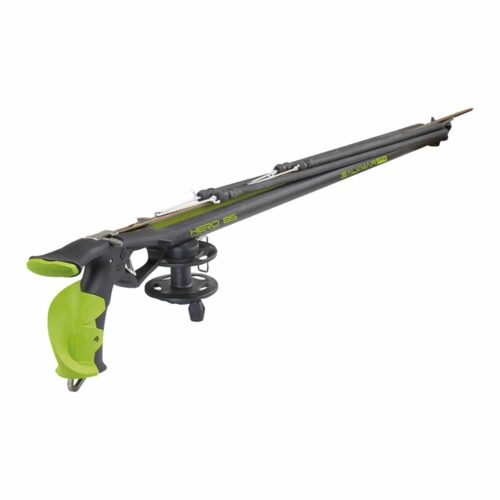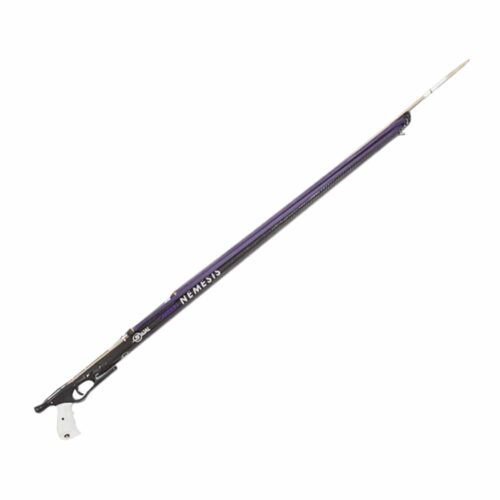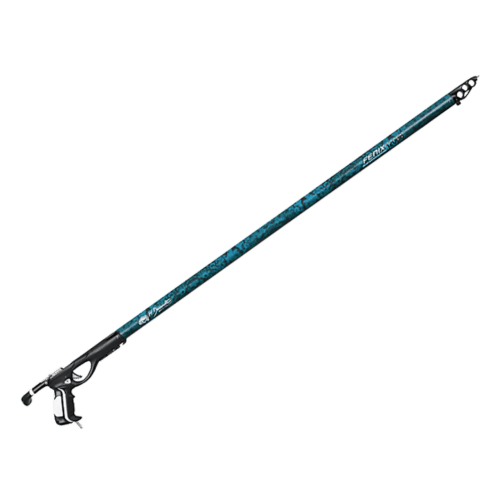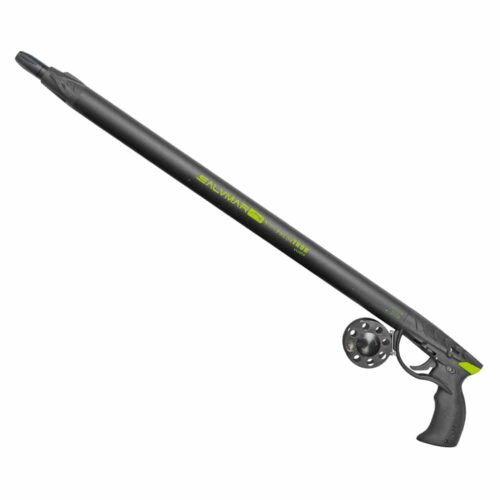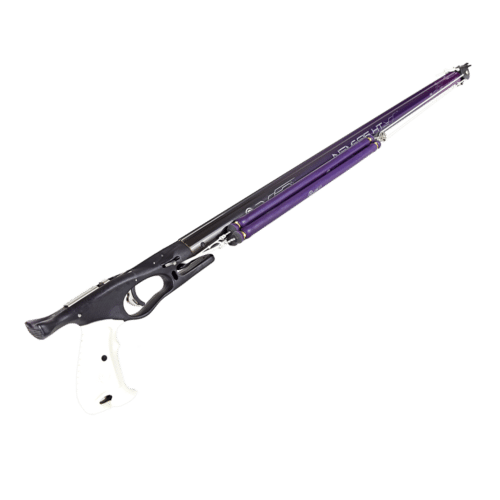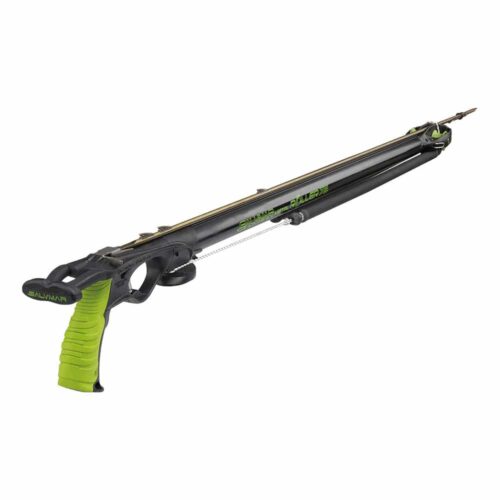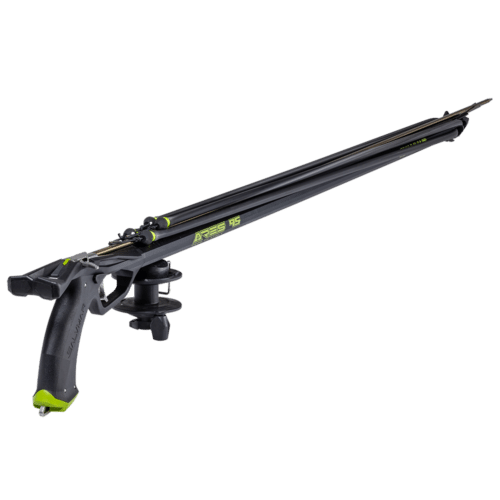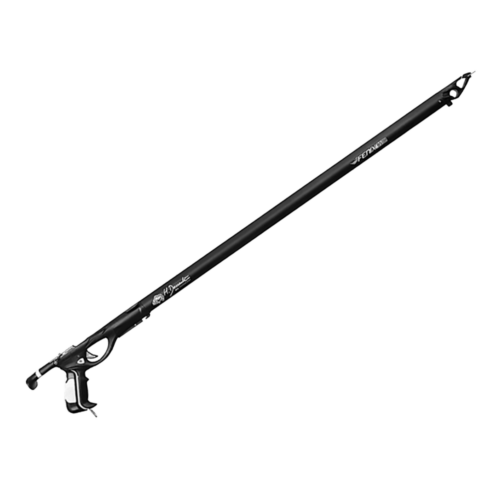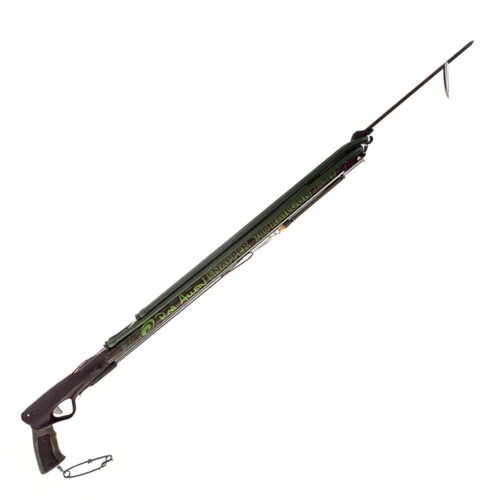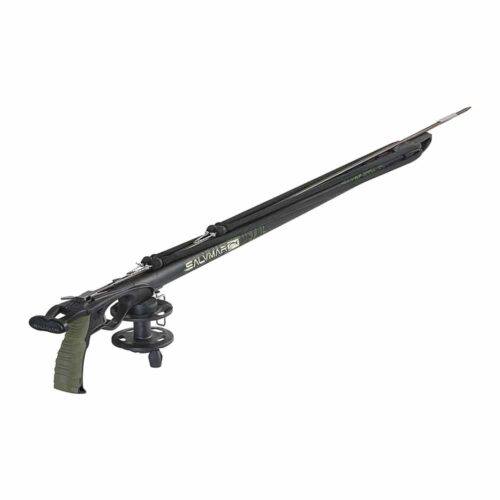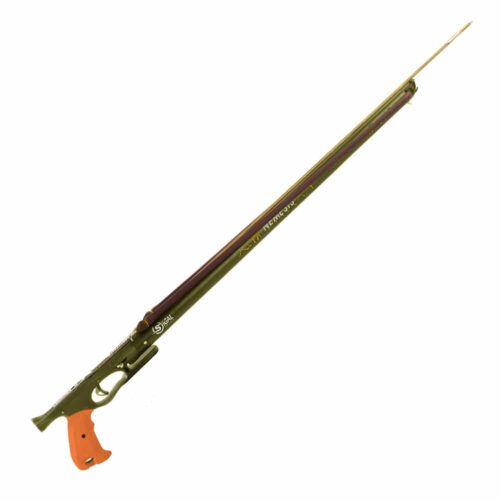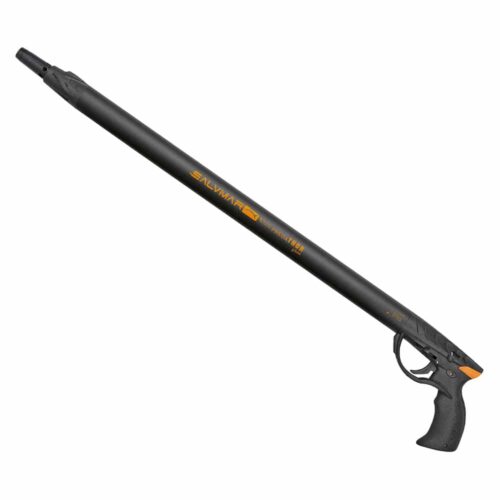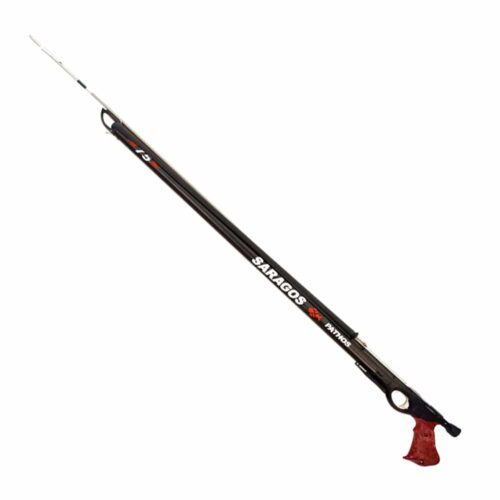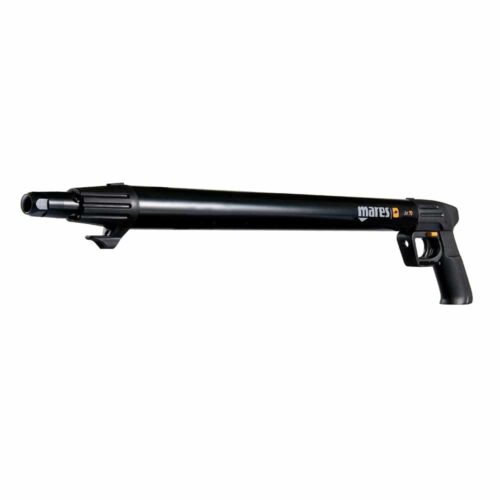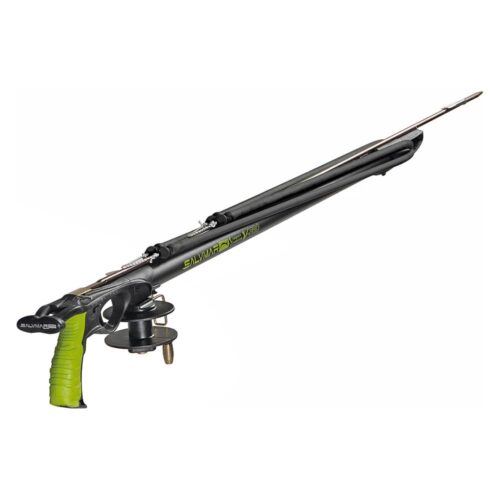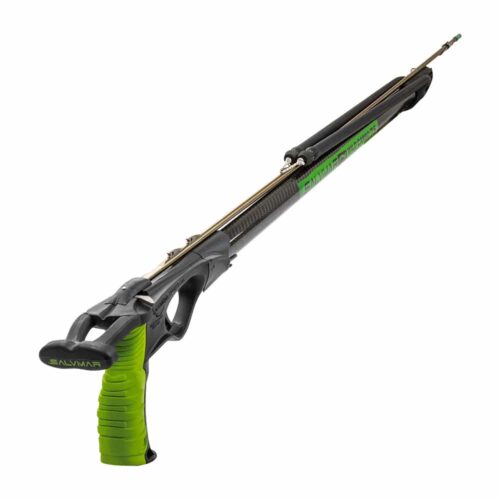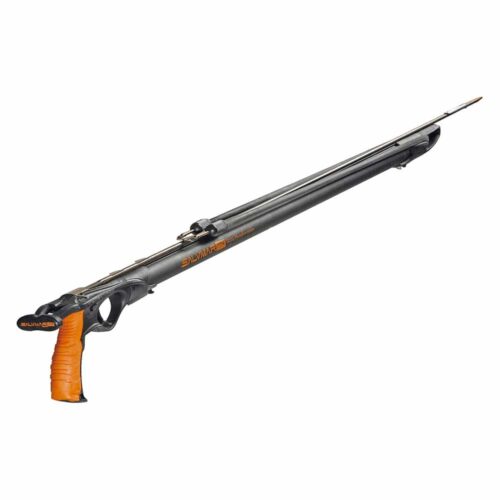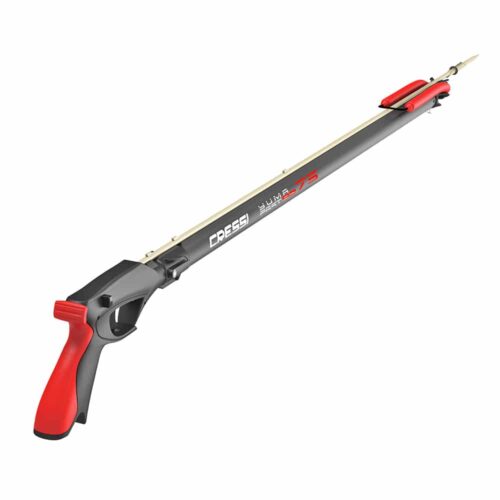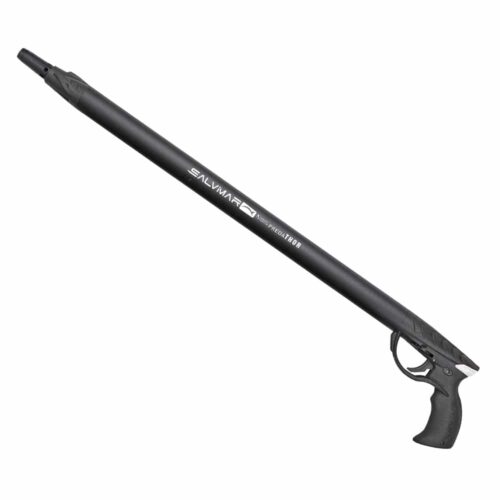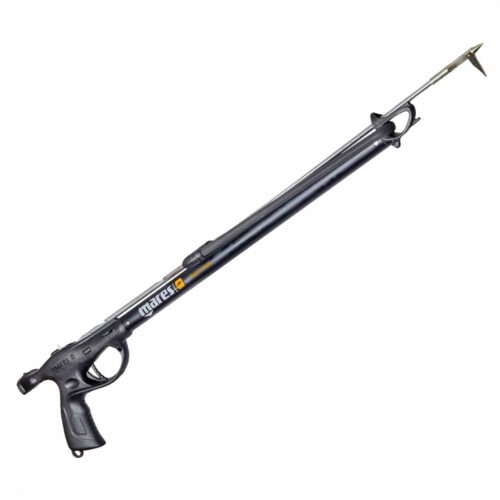Choosing a spearfishing rifle is not an easy task, especially if it involves the purchase of a single rifle. We all know that a single rifle can never cover all fishing techniques or adapt to all environmental conditions, much less be equally effective on prey of different sizes or types.
That said, the decision on which speargun to buy, regardless of length and type, is always complicated. Therefore, below we will guide you through some key factors to make that choice easier.
SPEARGUNS FOR SPEARFISHING
Choosing a spearfishing rifle is not an easy task, especially if it involves the'purchase of a single rifle. We all know that a single rifle can never cover all fishing techniques or adapt to all environmental conditions, much less be equally effective on prey of different sizes or types.
That said, the decision on which speargun to buy, regardless of length and type, is always complicated. Therefore, below we will guide you through some key factors to make that choice easier.
We will cover everything from propulsion types to materials to ideal lengths for different types of fishing.
WHAT IS A SPEARGUN?
The speargun is a device designed specifically for spearfishing. It works by means of push mechanisms that allow a'metal rod to be thrown with sufficient precision and force to pierce and catch a fish.
The'rod is connected to the reel line, when present, or directly to the rifle head via a line or nylon monofilament.
The'effectiveness of a speargun lies in its ability to ensure accuracy and power, allowing the spearfisherman to catch a specific prey while maintaining a'minimal footprint on the'marine environment.
This tool, unlike other fishing devices, allows you to select a single fish for which you will have only one chance to catch. This makes the speargun the most selective and environmentally friendly device for bringing a fish to the table.
RUBBER BAND SPEARGUNS VS. PNEUMATICS
There are mainly two types of spearguns: arbalete (rubber band guns) and pneumatic (oleo-pneumatic air guns). Elastic rifles use latex rubbers to generate the force needed to fire the'rod, while pneumatic rifles rely on the pressure of the'compressed air inside their reservoir to propel the piston, which, in turn, will launch the'rod.
Among rubber band rifles, a "subspecies" called the Roller Rifle has become popular in recent years. Roller rifles always take advantage of elastic propulsion, but this is coupled with pulley or pulley systems that allow the traction of the rubbers to be re-injected even under the rifle's shaft, thus achieving different ballistic results than traditional crossbows, which instead take advantage of the direct traction of the elastic bands only.
The choice between Arbalete and Pneumatic is often dictated by personal preference and specific fishing conditions. Both types have distinctive characteristics that affect performance under'water and the overall fishing experience.
RUBBER BAND SPEARGUNS
They use one or more rubber bands, tied to the rifle head, to launch the'rod. The load is generated by stretching the rubbers until they engage on the pins (or notches) on the'rod. When the'user pulls the trigger, the'rod is released, allowing the tires to discharge the'energy stored on it and thus launch it toward the target.
This variant of rubber band propulsion, although more complex in its operation and maintenance, allows in some configurations a reduction in recoil during firing and greater utilization of the travel of the rubber bands along the rifle barrel. Roller rifles are characterized by the presence of pulleys at the head that have the task of sending the rubbers back under the rifle's shaft. In contrast to traditional rifle guns that have the rubbers only at the top of the barrel, a loaded roller will have the rubbers both above and below the barrel.
Quietness
One of the advantages of arbalete is the reduced noise during firing, making them ideal for not scaring off nearby fish.
Intuitiveness of aiming
One of the most appreciated features of the rubber band rifle lovers is the'intuitiveness in the aiming phase. This is made possible by the fact that the'shaft is fully exposed above the rifle barrel, thus allowing the'user to sight the target directly with it.
Customization
They offer more flexibility in customization, allowing users to vary the number, diameter and elongation of rubber bands to suit different fishing situations.
Maintenance
They usually require easier maintenance than pneumatic rifles. Other than rinsing with fresh water, they require almost exclusively the replacement of the rubber bands, which, because they are made of natural latex, tend to wear out and degrade over time, leading to decreased performance and, ultimately, rupture.
PNEUMATIC SPEARGUNS
Mechanism of Action
Airguns operate through the use of compressed air as a propulsive medium to launch the'rod.
In the reservoir (barrel of the rifle) is the'compressed air. The operating pressure is usually between 15 and 30 bar, depending on the preferences of the'user. Inside the barrel, in a central position, is the rifle barrel, inside of which is the piston, which is responsible for launching the'rod during firing. When the rifle is unloaded, the piston is at a stop with the rifle head, in the process of loading the'user pushes the'rod inside the rifle, thus bringing the piston down until it engages in the firing mechanism. When the'user pulls the trigger, the engagement tooth releases the piston, which in turn pushes the'rod out of the rifle, thanks to the'compressed air in the reservoir.
The'compressed air in the tank never leaves the rifle's "closed" system, so there is no need to refill the tire with new air at the end of a fishing session.
The head of airguns can be standard or vacuum type, which is increasingly popular among those aiming for top performance in this type of speargun.
Power Variator
For tires that are equipped with it, the power variator is definitely a plus point for this type of rifle.
The variator allows the rifle's firing power to be greatly reduced when, for example, we need to hit prey in a den or in direct contact with rock.
By acting on a'special lever located at the'handle, the reservoir can be partialized, causing only part of it to concur in the thrust of the piston, effectively cutting the firing power. So a simple click is all it takes to switch from full power for open-water fishing to reduced power for den shooting.
Standard Muzzle
The standard type of cylinder head causes the barrel to flood during the loading phase, this results in the piston, in the phase of ejecting the'rod during firing, having to eject not only the'rod but also the'water that has flooded the barrel during the loading phase. In fact, there are holes on the head that allow the'forced expulsion of the'water from the rod during firing.
Vacuum Muzzle
Le vacuum headers, on the other hand, they provide a sealing system that prevents'water from entering the rod during the loading phase. This offers several advantages, first of all, the piston has to eject only the'rod (no more rod and water), allowing a significant increase in performance at the same pressure. In addition, the vacuum head, thanks in part to a special shock-absorbing bushing, significantly reduces noise during firing, thus making the pneumatic vacuum rifle a'weapon that is as quiet as an elastic rifle, if not more so. Vacuum pneumatic rifles, however, require more care and meticulous maintenance to ensure the'integrity of the head sealing system.
Inner Pipe
The speargun barrel is located inside the rifle barrel (tank) and is attached on one side to the headstock and on the other side to the'handle, through which the piston slides.
The most popular rods have an inner diameter of 11 and 13 mm. The 11 mm rods allow quieter and more accurate shots but offer less power, so they are suitable for light rods between 6.5 and 7.5 mm in diameter. The 13 mm barrels, on the other hand, allow the'use of heavier rods, between 7.0 and 8.0 mm, due to the greater power
At the same pressure, airguns equipped with 11 mm barrels are easier to load than those equipped with 13 mm barrels.
Maintenance
Pneumatic rifles require more complex maintenance than elastic rifles, including checking the seals and pressure system to make sure the rifle is working properly. It is always advisable to have these checks done annually by a specialized dealer. In addition, more attention is needed on general cleaning and rinsing of the rifle after each use. Good tire care prevents sand or other debris from entering the barrel during loading stages, causing damage and malfunction.
WHICH IS THE BEST SPEARGUN? ARBALETE OR PNEUMATIC?
There is no real answer to this question. The'arbalete and the tire are equally valid; the choice of one or the'other depends mainly on personal preference in relation to one's fishing skills and habits.
An experienced angler could use both systems based on the ever-changing conditions of freediving fishing. Both propulsion systems are therefore equally effective in the hands of the'user.
Our advice is to try both systems for a period of time so that you can figure out which of the two types is more congenial to your fishing style.
For your convenience, the most popular models are listed below.
Elastic rifle: Salvimar Ares and Sigal Nemesis Pro Green.
Both rifles have high technical characteristics and excellent value for money.
Air rifles: Salvimar Predathor Plus and Salvimar Predathor Vacuum.
Both feature 13 mm barrel and power variator. The Predathor Vuoto features the watertight head, while the Predathor Plus has the standard head.
SPEARGUN MATERIALS: ALUMINUM, CARBON FIBER OR WOOD.
Spearguns, whether arbalete or pneumatic, are made of various materials, each with its own advantages. The choice of material in a speargun has a direct impact on its characteristics of buoyancy, handling, strength, weight, and aesthetics. Here is a focus on the three main materials:
Aluminum
Strengths include durability, cost, and versatility. Aluminum is preferred for its corrosion resistance and excellent value for money. It is a strong material that provides good durability and is suitable for anglers of all experience levels. It offers an optimal balance between performance and ease d'of use and is used in the construction of both spring and air rifles.
Carbon Fiber
Strengths include light weight, strength, structural rigidity, and performance. Carbon is celebrated for its incredible strength-to-weight ratio, offering lightweight yet extremely strong and rigid rifles.
These rifles are ideal for those seeking high performance from a rifle. Carbon fiber, due to its structural rigidity, allows for reduced geometries and volumes that minimize the resistance of'water during movement, thus increasing the'handling of the rifle, which is taken to the highest levels with this material.
In assembled elastic rifles, the'use of carbon fiber allows for a lighter, higher-performance shaft, while in monocoque rifles it allows for shapes and geometries unthinkable with other materials.
In pneumatic rifles, the carbon barrel allows for lighter weight and buoyancy, consequently better rifle buoyancy and increased overall performance.
Wood
Strengths include'aesthetics, malleability, and mass. Wooden rifles have a natural appearance and are popular with a wide audience of enthusiasts. Wood has the characteristic of being an easily workable material, even in the home workshop, so many enthusiasts with a little'manual dexterity are able to DIY a wooden rifle. For this reason, in our section Accessories Spear guns - Roller - Wood, find all the components to build a wooden rifle. One'other characteristic of wooden rifles is the high mass, which, although it may adversely affect handling, helps to attenuate the recoil of the rifle during firing.
This material is exclusively suitable for the construction of elastic rifles.
The choice of material depends on personal preference, the type of fishing practiced, and environmental conditions. Wood is preferred for its aesthetics and simplicity of construction, carbon for those seeking light weight and high performance, and'aluminum is valued for its durability and good compromise between cost and quality.
CHOOSE THE RIGHT SPEARGUN LENGTH
The length of the rifle is a key factor affecting the swing and range of the'rod. Shorter rifles are ideal for murky waters and close shooting in confined spaces, offering more maneuverability. D'on the other hand, longer rifles are preferable for open water fishing, where shooting distance and accuracy become crucial. Although the'handling may be less, the range of the'rod is more crucial here than the speed of alignment.
In conditions of medium visibility (about 15 to 20 meters), shotguns from 40 to 75 cm are considered short and therefore suitable for burrow and rake fishing. Rifles between 80 and 95 cm can be considered medium rifles, useful for a mixed fishing technique. While shotguns between 100 and 120 cm are to be considered long, ideal for free-range shooting on distant or large prey. Shotguns over 120 cm in length are considered extra long and are mainly suitable for fishing in the blue, such as fishing for large pelagics.
IN CONCLUSION
Spearfishing is an'art that requires not only skill and knowledge of the'marine environment, but also the'right equipment. Choosing the right speargun for your needs can make all the difference in success and safety.






